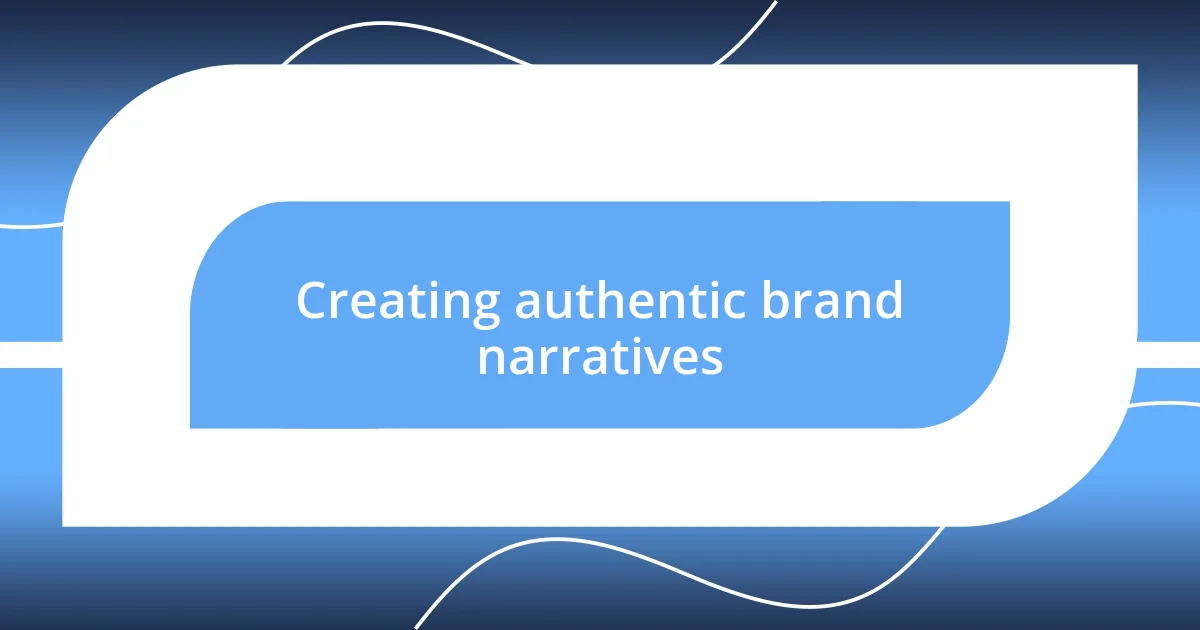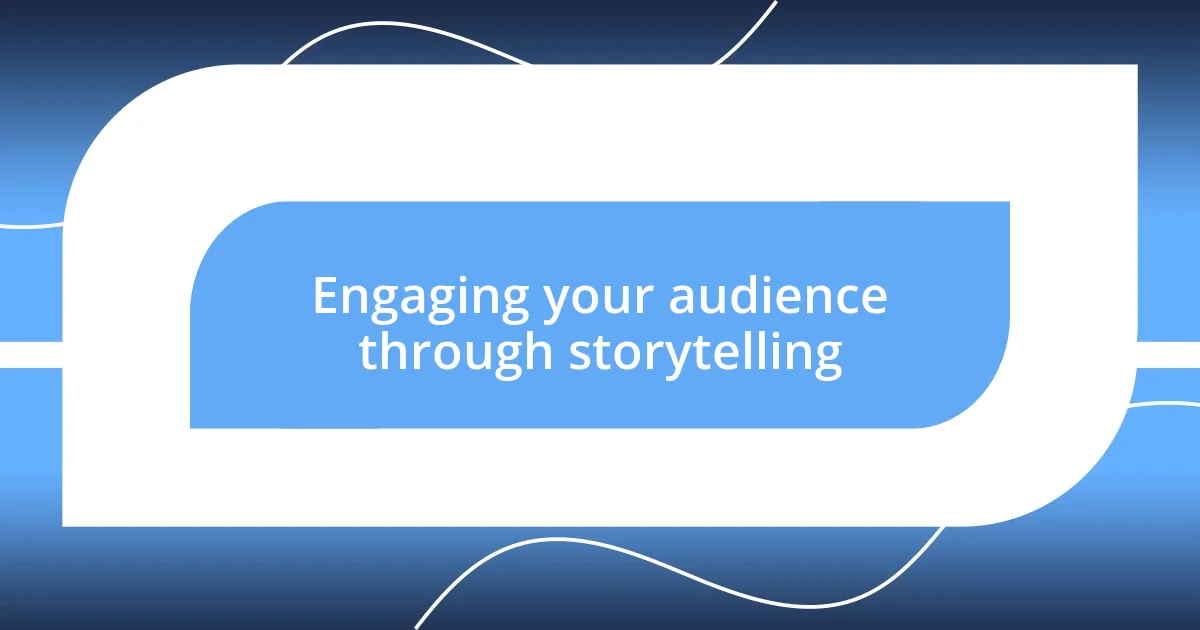Key takeaways:
- Authentic brand narratives foster emotional connections by sharing vulnerabilities and unique stories, allowing customers to relate on a human level.
- Engaging storytelling requires personalization, vivid imagery, and an understanding of audience diversity to create compelling experiences that resonate.
- Successful brand storytelling, like Nike’s and Coca-Cola’s campaigns, transforms products into meaningful experiences, promoting themes of empowerment, connection, and social change.

Creating authentic brand narratives
Creating authentic brand narratives is not just about presenting your product; it’s about sharing your journey and values. I remember when I first encountered a brand that truly resonated with me—they shared their struggles and triumphs openly. It made me question: what stories are we telling, and are we brave enough to be vulnerable?
Authenticity shines through when brands embrace their unique stories, quirks, and even imperfections. I often think about how storytelling can create a lasting emotional connection. For instance, when a brand I admire openly discusses its missteps and learning moments, I feel more inclined to trust them because it reflects humanity—a trait we can all relate to.
When crafting your narrative, consider your audience’s perspective. Are you merely selling a product, or are you inviting customers to become part of a larger story? That’s where the magic happens. I found that when brands align their missions with real-life impacts, they foster genuine relationships that go beyond the transaction.

Engaging your audience through storytelling
Engaging your audience through storytelling requires tapping into the emotions that drive connection. I remember attending a workshop where a speaker shared how a simple story about their grandfather’s legacy transformed their brand message. It wasn’t about the products—they weaved in family values and tradition, which created a magnetic pull for everyone in the room. Isn’t it fascinating how a personal narrative can elicit such deep emotional responses?
Moreover, the way you present your stories can make a significant difference in engagement. When I see a brand utilize vivid imagery and relatable scenarios in their storytelling, I often find myself more involved. I’ve observed that stories with a clear setting, a relatable character, and a conflict can turn a mundane advertisement into a compelling experience. This structure adds depth and keeps the audience invested—after all, who doesn’t love a good tale?
Lastly, storytelling isn’t a one-size-fits-all approach. Different audiences resonate with various narratives, and understanding this diversity is key. I think about the campaigns that stuck with me most; they were always the ones that spoke to my values and interests. By adjusting your storytelling style to match your target audience’s preferences, you enhance the chances of forging that crucial bond, making them more than just consumers—they become part of your brand’s narrative.
| Engaging Storytelling Elements | Effects on Audience |
|---|---|
| Personal Anecdotes | Creates emotional connection and relatability |
| Imagery and Scenarios | Enhances visualization and engagement |
| Diverse Narratives | Resonates with varied preferences and values |

Examples of successful brand storytelling
One fantastic example of successful brand storytelling comes from Nike with their “Just Do It” campaign. I remember when I first watched their ads featuring athletes overcoming incredible odds. It’s not just about promoting shoes; it’s about inspiring people to push their boundaries. Isn’t it empowering to see a brand that doesn’t merely sell products but also sells the idea of perseverance and self-belief?
Similarly, Coca-Cola’s “Share a Coke” campaign brought a personal touch that connected deeply with consumers. I can’t forget the anticipation I felt finding a Coke bottle with my name on it. It transformed the act of drinking a soda into a shared experience, making customer interactions more personal. This approach highlights how simply including names on a product can create a sense of belonging and invoke joyful memories, elevating a brand from a product to a cherished experience.
Another notable example is Dove’s “Real Beauty” campaign, which celebrated body positivity and self-acceptance. When I learned about their initiative to feature real women instead of traditional models, it struck a chord with me. It’s not just marketing; it promotes a powerful message of inclusivity and self-love that resonates with many. How often do we see a brand take a stand like this? It’s a reminder that effective storytelling can drive social change while enhancing brand loyalty.














